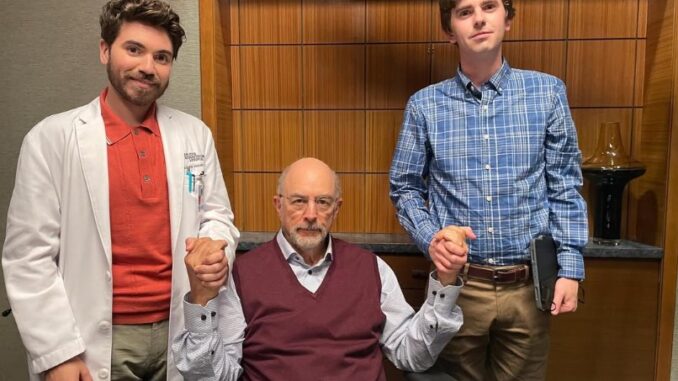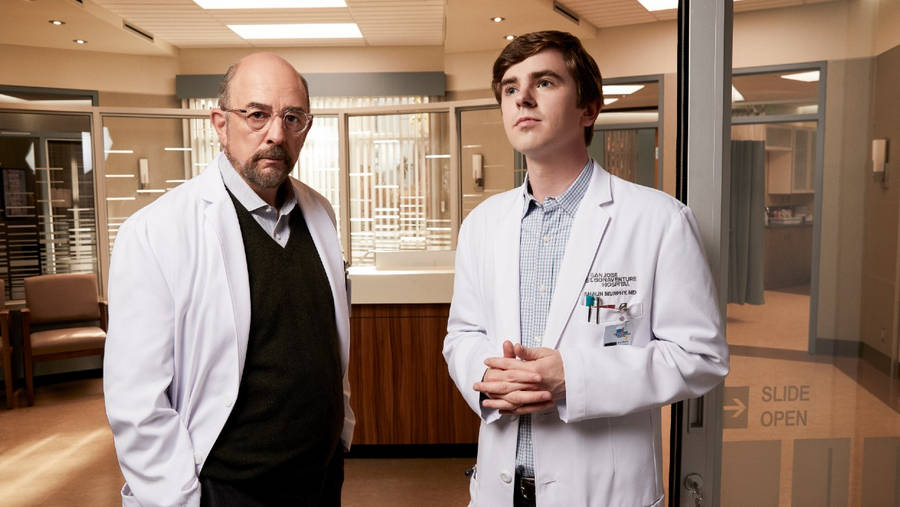
“The Good Doctor” Takes a Dark Turn: A Psychotic Hallucination Unravels a Shocking Truth
The Good Doctor has always been known for its emotional depth, medical drama, and moments that challenge our perceptions of life and relationships. But in one unforgettable episode, the show dives into the darker corners of Shaun Murphy’s mind, taking both the character and the audience on a gripping journey through a psychotic hallucination that ultimately leads to a devastating truth. The blend of psychological tension and medical drama in this episode is unlike anything the show has delivered before, and it leaves viewers questioning not just the nature of Shaun’s challenges, but the very reality he’s been living in.
Throughout the series, Shaun has been portrayed as a brilliant surgeon with autism and savant syndrome. His medical skills are undeniable, but his ability to navigate the complexities of human emotions and relationships has always been a struggle. This battle between brilliance and emotional confusion is a central theme of The Good Doctor, but in this particular episode, Shaun’s internal world becomes even more chaotic when his mind takes a dark turn.
The episode begins with Shaun experiencing vivid, disorienting hallucinations. These aren’t just fleeting moments of confusion—they are full-blown psychotic episodes that distort his sense of reality, pulling him into a world where things aren’t as they seem. For the audience, this sudden shift in Shaun’s experience is both jarring and fascinating. We’re used to seeing Shaun navigate the world with a unique perspective, but now, his mind is playing tricks on him, and it’s unclear what’s real and what’s a product of his distorted perception.

The most shocking moment comes when Shaun, amid his hallucinations, uncovers a truth that has been buried for years—something that not only changes his life but also shifts the dynamics of his relationships with those around him. The revelation is both heartbreaking and eye-opening, as it forces Shaun to confront painful memories and emotional wounds that he’s long avoided. This moment serves as a powerful reminder that even the most brilliant minds have their vulnerabilities, and the battle for mental and emotional clarity is just as intense as the battle for survival in the operating room.
The way The Good Doctor handles this psychotic episode is nothing short of brilliant. The show manages to take a very real and often stigmatized mental health issue and present it in a way that’s both sensitive and engaging. Rather than sensationalizing Shaun’s hallucinations, the show allows viewers to feel the raw confusion, fear, and intensity that come with losing touch with reality. It’s a reminder that mental health is just as important as physical health, and the struggles that come with it can be just as complicated and profound.
By the end of the episode, Shaun’s journey through his hallucinations leads to a cathartic moment of clarity. While the truth that emerges is difficult to accept, it’s a necessary part of his healing process. Shaun, as always, is a character defined by his resilience. Despite the emotional turmoil he faces, he begins to piece together the truth of his past, ready to confront it and move forward with a renewed sense of understanding.
In conclusion, this episode of The Good Doctor is a game-changer. It pushes the boundaries of what we expect from the show, taking Shaun—and the audience—on a psychological rollercoaster that ultimately reveals deep truths and emotional growth. Through Shaun’s psychotic hallucinations, The Good Doctor offers a poignant exploration of the complexities of the human mind, showing that even the brightest minds have their dark corners. This episode not only reshapes how we view Shaun but also emphasizes the importance of confronting one’s past and the power of truth in healing.
